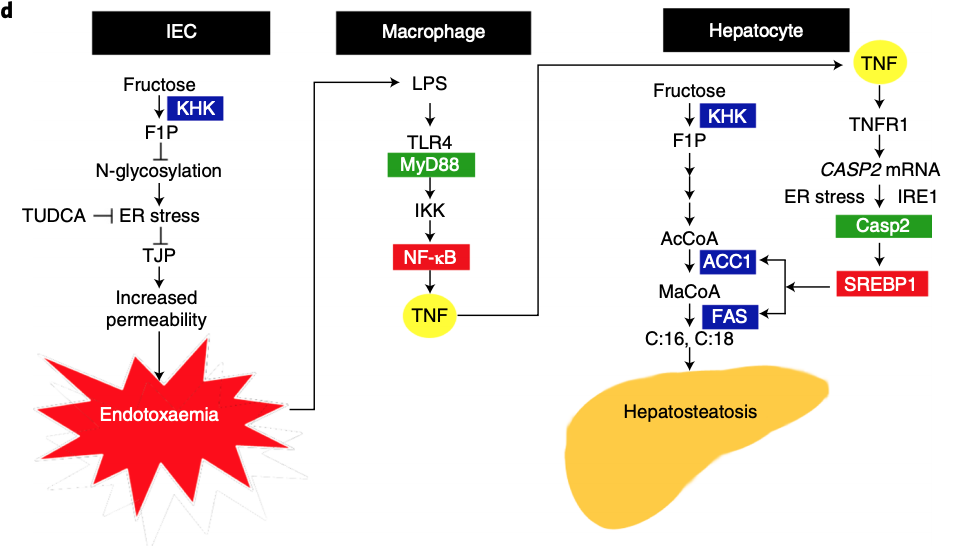A double dose of sugar!
The Nature Metabolism paper explains why some people who eat high sugar diets get fatty liver and some don’t.
It has to do with “leaky gut”; those with leaky gut get NAFLD. Except that chronic fructose causes NAFLD!
The Cell Metabolism paper shows why fructose causes both liver fat AND oxidative stress.
Normally these are in different liver pathways. It turns out the cell has a switch called triose kinase, which directs fructose metabolites down one pathway or the other.
These two papers, taken together, drive home the assertion that fructose is the primary, and the most modifiable driver of fatty liver, insulin resistance, and metabolic syndrome.
It’s the processed food, D’oh!!
Fructose stimulated de novo lipogenesis is promoted by inflammation, Nature Metabolism
Triose Kinase Controls the Lipogenic Potential of Fructose and Dietary Tolerance, Cell Metabolism

Schematic summary from “Fructose stimulated de novo lipogenesis is promoted by inflammation.” In IEC, dietary fructose is converted to F1P by KHK. F1P inhibits protein N-glycosylation, triggering ER stress and intestinal inflammation to downregulate TJPs and trigger barrier deterioration and endotoxaemia. Endotoxin (LPS) reaches the liver via the portal vein and engages TLR4 on macrophages to activate nuclear factor kappa B (NF-κB) via the adaptor protein MyD88 and induce TNF expression and secretion. TNF engages TNFR1 on hepatocytes to induce caspase-2 (CASP2) mRNA, whose translation is stimulated by ER-stress-activated IRE-1. CASP2 activates SREBP1 to induce ACC1 and FAS, thereby priming the liver to convert KHK-generated F1P to FA (C:16, C:18), giving rise to hepatosteatosis. *P< 0.05; **P< 0.01; ***P< 0.001.



Recent Comments